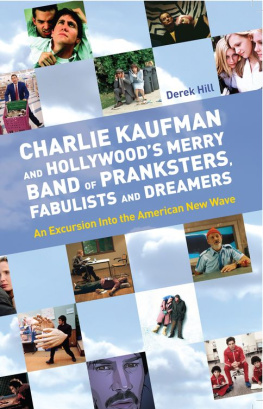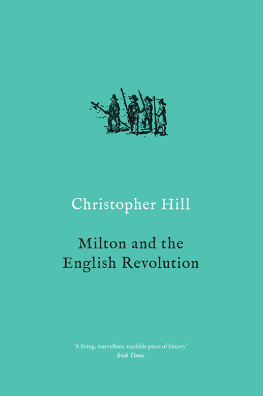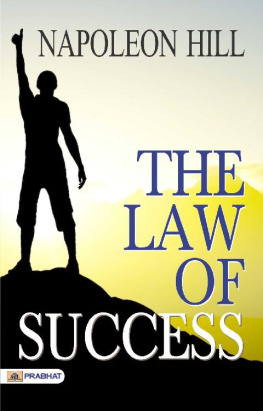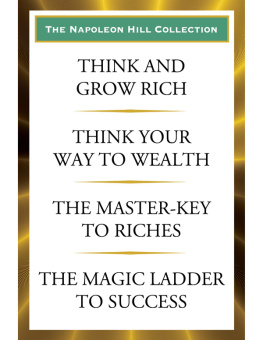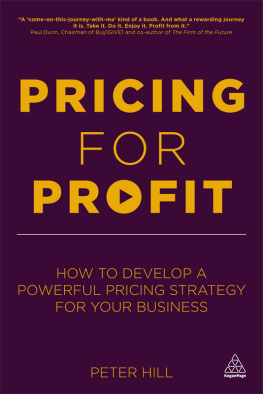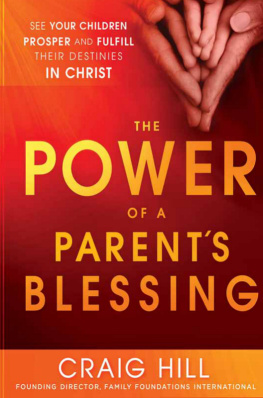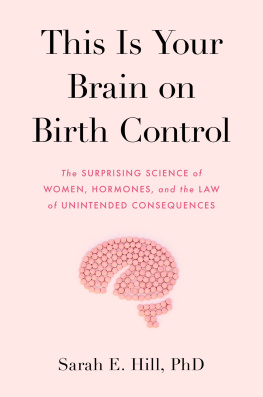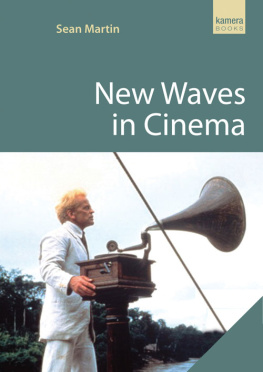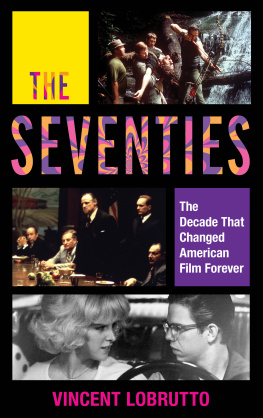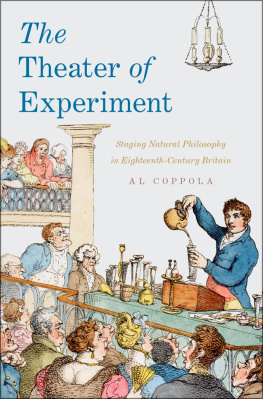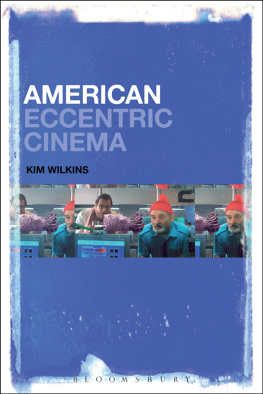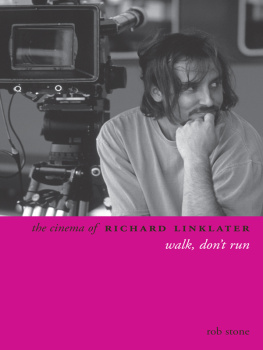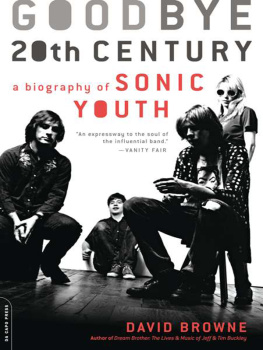I would like to thank my editor Hannah Patterson for the opportunity to write this and for her patience with me. Joe Pettit, Jr. for his help with research materials and support, Lisa Moore for her friendship and words of wisdom over the years, Shawn Levy for his encouragement and help, Joe Kane at VideoScope, Jackie Acampora at MysteryScene, Todd Grimson, and Michelle just because.
I also want to thank my mom, who rarely showed parental guidance when it came to my movie watching at an impressionable age. I am grateful. She unknowingly set me loose to explore all that is sublime and wretched. No doubt she would be shocked by some of my choices, but I hope she is pleased with the outcome of it all.
An American No Wave
Weve been here before. Film movements are nothing new, though sadly they seem like a rarity nowadays. Its as if the idea of a group of filmmakers intentionally attempting to spark a revolution with their cameras is too dated, too romantic and too ridiculous even to ponder. It appeals to the ambitious 14-year-old within, even though the older, wiser, more cynical adult knows better.
But there is no reason why the genuine, conscious, aesthetic movement with or without manifesto determined to subvert the mainstream culture at large with its transcendental images should necessarily be a thing of the past. The history of film comprises such movements, whether they are of a philosophical nature or simply a stylistic one even when not all members were conscious of being part of the respective movement, such as the workmanlike visionaries behind the films noirs. The 1940s had Italian Neo-Realism. The 1950s had the British Kitchen Sink dramas. The 1960s had the French nouvelle vague (which subsequently spawned new waves across Europe in Italy, Czechoslovakia, Poland, Hungary, Korea, and Japan). The 1970s had the New German Cinema. And most recently there has been the rabble-rousing Dogma 95 bunch. Issuing a manifesto to the world in 1995, this filmmaker collective, which included Lars Von Trier and Thomas Vinterberg among its founding members, declared a rescue action upon films that perpetuated the Hollywood myth of gimmickry, illusion, and lies. Brandishing a system of rules known as the Vows of Chastity, the Dogma 95 clan individually waged a cleansing campaign against artifice, mandating that shooting must be done on location; sound must never be produced apart from the images or vice versa; the film must not take place where the camera is standing; shooting must take place where the film takes place; the film must be in colour; genre movies are not acceptable, and so on. Directors who did not submit to these tenets were publicly reprimanded. Filmmakers who did adhere received a certificate and the guiltless sleep of a job well done.
Contentious, over-the-top, deadly humorous, and equally serious-minded, what started out as four films Vinterbergs Festen/The Celebration (1998), Von Triers Idioterne/The Idiots (1998), Sren Kragh-Jacobsons Mifunes Sidste Sang/Mifune (1999) and Kristian Leverings The King is Alive (2000) eventually grew to over 200, though the originators of this conscious movement soon abandoned the stringencies of their own rules when it became increasingly clear that Dogma 95 was becoming a genre all its own a notion that was anathema to what was originally intended.
Recently in American cinema there have been furtive whispers (appropriately enough) about a so-called mumblecore aka bedhead cinema. is still up for debate, theres no arguing that these truly independent filmmakers (many of the films dont even get shown at the Sundance Film Festival) are a refreshing alternative to many of the pseudo-indies subsidised by the major studios which flood Sundance every year.
Rumours abound that a cabal of American filmmakers, known not-so-secretly as the Pizza Knights, gather once a month to watch and study American films of the 1970s, the so-called New Hollywood era or age of the Movie Brats. But considering the disparate array of filmmakers who supposedly attend these periodic events Wes Anderson, David Fincher, Spike Jonze, Steven Soderbergh, Roman Coppola, Alexander Payne, Kimberly Peirce, among others and taking into account their own varied cinematic contributions, the secret order of the Pizza Knights seems more like a clubhouse of industry insiders who just dig good movies and want to hang out than a definable, significant movement.
Then where does that leave us? Has there been no real American film movement since the days when Coppola, Scorsese, Altman, Ashby, Cassavetes, Mazursky, Spielberg, and Lucas, among others, stormed the gates of the Hollywood establishment and, for a brief moment, took over and ushered in an aesthetic renaissance? Even then, though, the advent of the New Hollywood was an unconscious movement based on purely commercial grounds the box-office success of Easy Rider (1969) that eventually opened the doorway to more substantial artistic opportunities. Did the flame of overthrow really die out when the directors of the New Hollywood tempered their own rebellion? I dont think so, since the filmmakers discussed in this book commonly share stylistic and thematic characteristics that could well be viewed as a movement.
But before we jump to the present a few words on the nouvellevague and New Hollywood.
The Nouvelle Vague
The details that explain the emergence of the nouvelle vague, a term that journalist Franois Giroud originally coined in 1958 in LExpress, seem slightly ridiculous in retrospect, perhaps a bit too romantic and contrived, as if they were all the recollections of an aging sentimental dreamer. But we have the writings, the interviews and, of course, the films to prove the dreamer correct. And though, as famously stated in John Fords 1962 film, The Man Who Shot Liberty Valance, its always preferable to print the legend over the facts, in this case the facts are as alluring as the legend.
Like their literary American counterparts the Beats (Kerouac, Ginsberg, Burroughs), these Gallic hipster provocateurs were seeking something more tangible and meaningful to their lives beyond postWorld War II prosperity, industrialisation and bourgeois comfort and complacency. Out of the wreckage of that wars aftermath, the seeds of a burgeoning film movement were germinating. With little money and no real hands-on experience (though plenty of experience and know-how gleaned from watching innumerable films), these ambitious art criminals stormed the cinema houses across the globe and proclaimed a crusade against the glossy, formal and, in essence, dead mainstream films that were the backbone of the French movie industry at the time. The nouvelle vague filmmakers were cinema literate, intelligent and shrewd, and their films were unlike anything that the world had seen. It was life projected, preserved, and volatile like the cinema hadnt experienced in years.
The main culprits in the subsequent and short-lived overthrow Franois Truffaut, Jean-Luc Godard, Claude Chabrol, Jacques Rivette, and Eric Rohmer were a group of passionate, militant young men who religiously gathered at the cathedral of cinema in Paris, the Cinmathque Franaise, to gobble up the images of the world at 24 frames per second and passionately argue the merits (or lack thereof) of whatever the Cinmathques co-founder and de facto archivist, preservationist, and saviour Henri Langlois served up. As cineastes, Truffaut, Godard, et al devoured films from all over the world, sans subtitles, and gained their formative film education within the smoky twilight world of the

